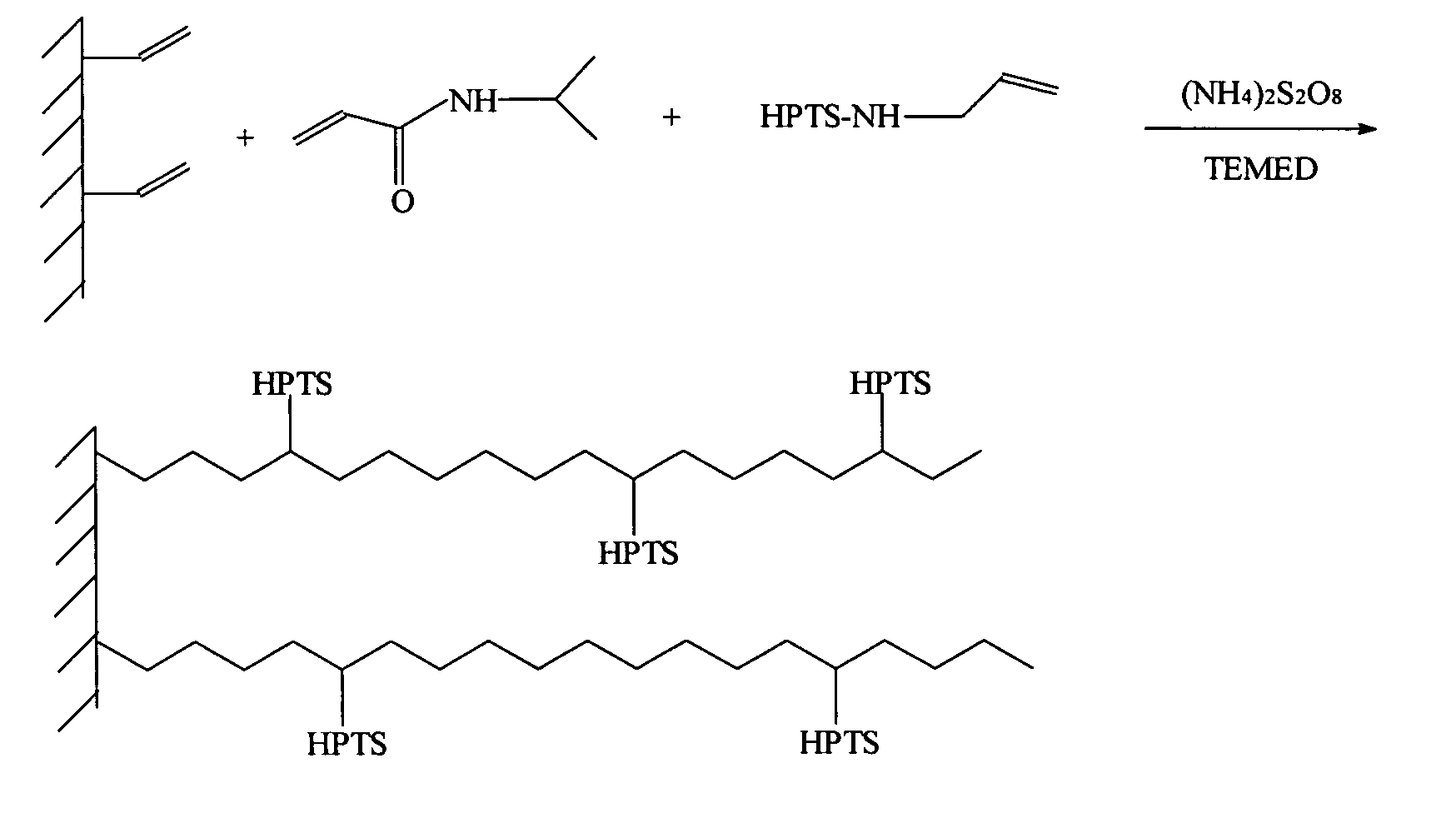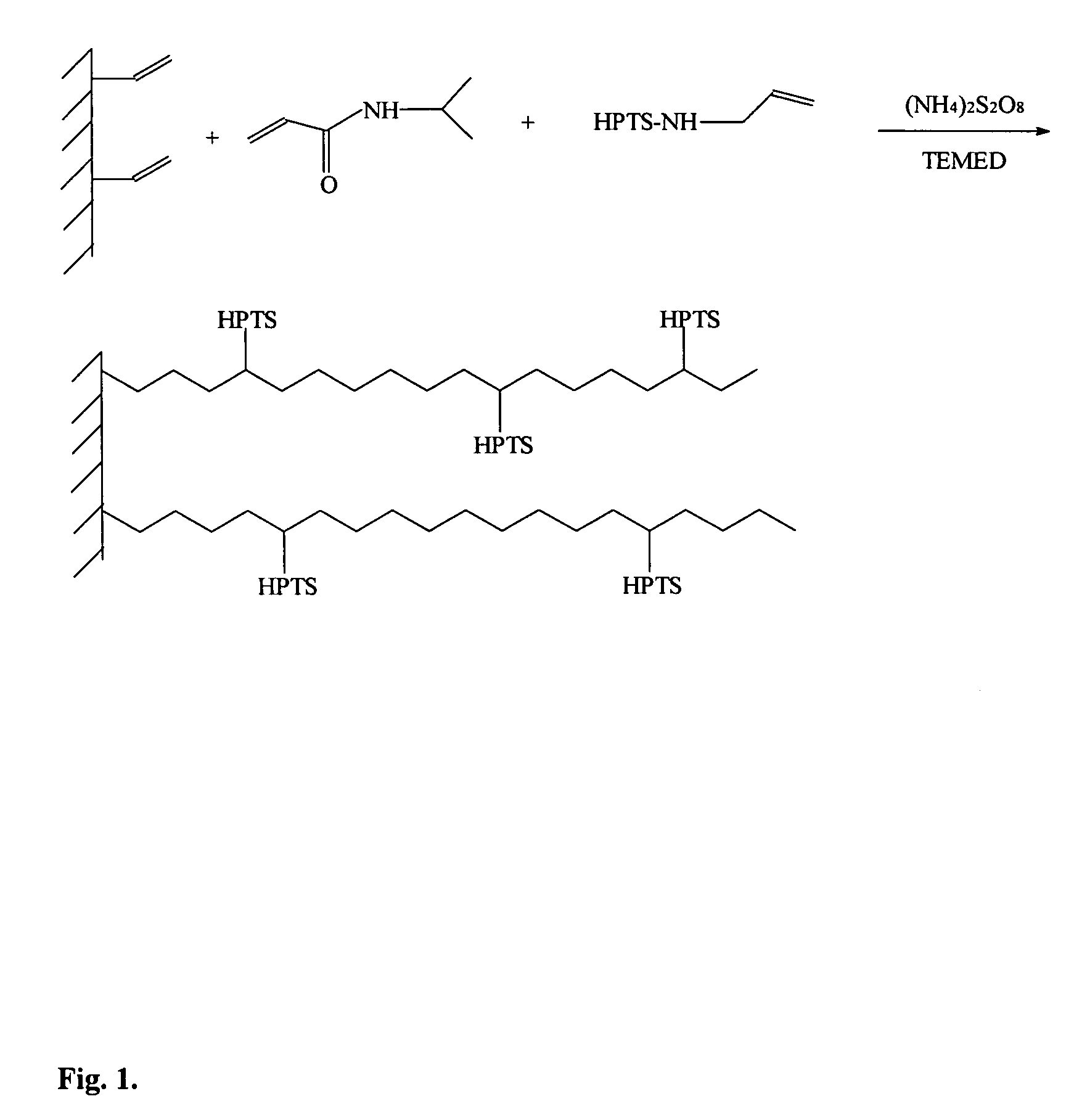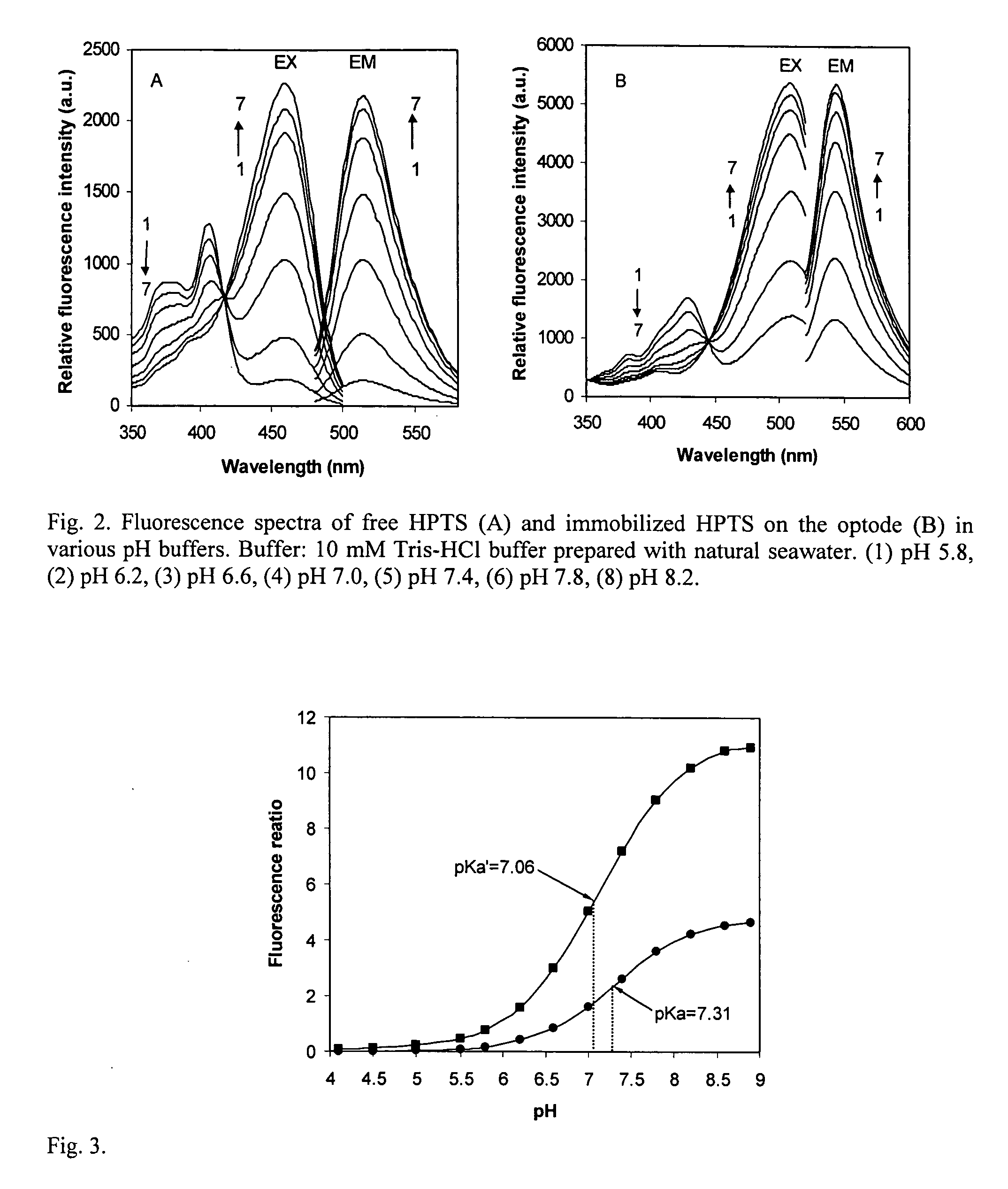Optical pH sensor
a technology ph sensor, which is applied in the field of optical ph sensor, can solve the problems of lowering the sensitivity of ratiometric ph measurement, and achieve the effect of high stability and enhanced sensitivity
- Summary
- Abstract
- Description
- Claims
- Application Information
AI Technical Summary
Benefits of technology
Problems solved by technology
Method used
Image
Examples
Embodiment Construction
[0016] The sensor of the invention is based on a new immobilization method of HPTS onto a polymer membrane. The traditional immobilization method directly binds or entraps HPTS in a membrane, so the vibration of immobilized HPTS molecules is largely limited. Restricted vibration results in changes of HPTS excitation bands and thus pH response characteristics. In a method according to the invention, a water-soluble single polymer chain is conjugated to HPTS. This soluble polymer chain is then covalently bound to the surface of a rugged insoluble polymer membrane through a co-polymerization procedure. When this kind of membrane is placed into aqueous solution, the water-soluble polymer chains stretch out, and the immobilized HPTS exhibits characteristics very similar to free HPTS.
[0017] A schematic illustration of preparation of an optical sensor in accordance with the invention is shown in FIG. 1. An HPTS conjugate is first prepared. Suitable conjugates include but are not limited t...
PUM
| Property | Measurement | Unit |
|---|---|---|
| excitation wavelengths | aaaaa | aaaaa |
| excitation wavelengths | aaaaa | aaaaa |
| excitation wavelengths | aaaaa | aaaaa |
Abstract
Description
Claims
Application Information
 Login to View More
Login to View More - R&D
- Intellectual Property
- Life Sciences
- Materials
- Tech Scout
- Unparalleled Data Quality
- Higher Quality Content
- 60% Fewer Hallucinations
Browse by: Latest US Patents, China's latest patents, Technical Efficacy Thesaurus, Application Domain, Technology Topic, Popular Technical Reports.
© 2025 PatSnap. All rights reserved.Legal|Privacy policy|Modern Slavery Act Transparency Statement|Sitemap|About US| Contact US: help@patsnap.com



